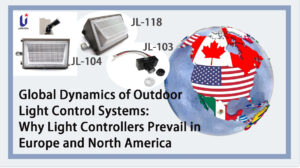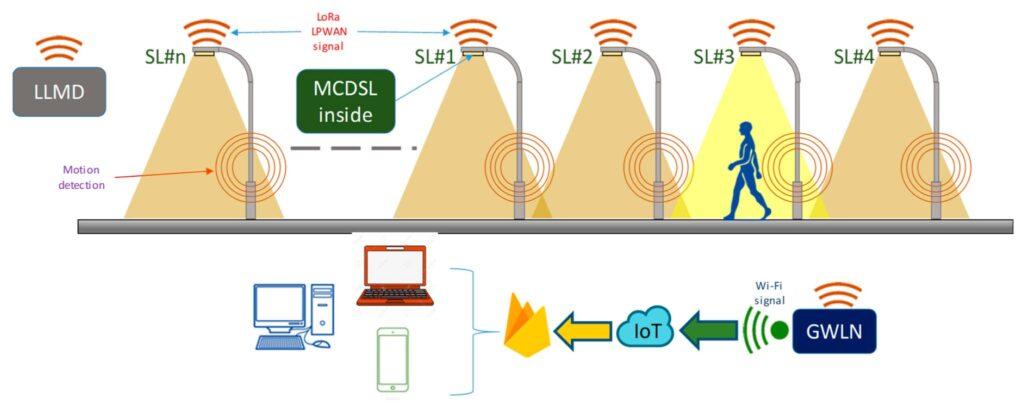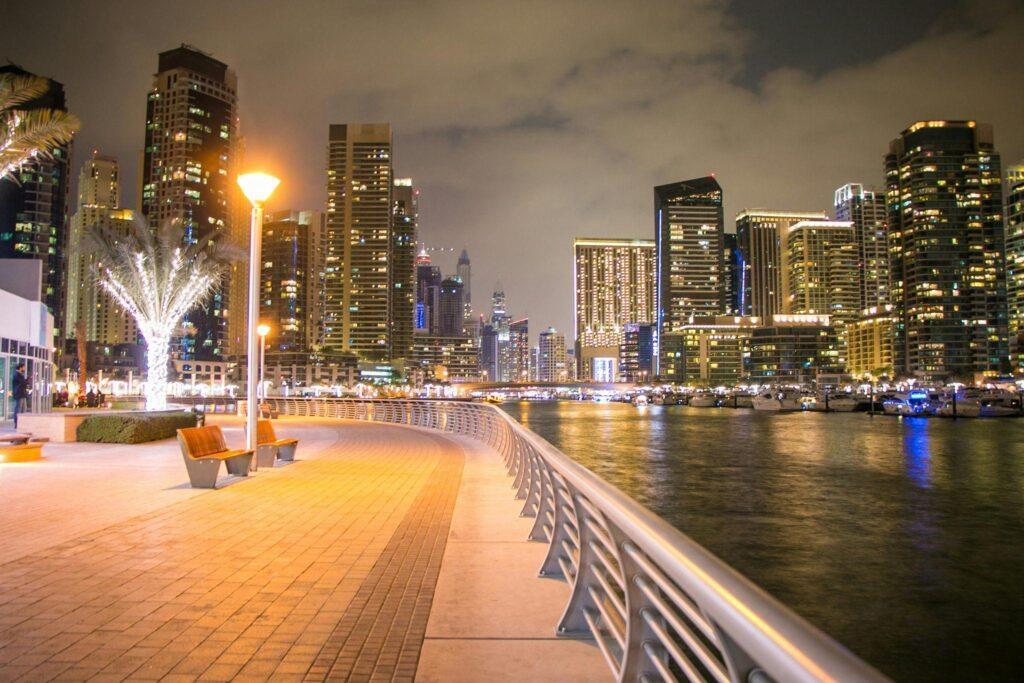Outline
- Introduction
- Economic Incentives
- Policy & Regulations
- Market Sophistication
- Infrastructure Quality
- Cultural & Educational Influences
- Supply Chain Advantages
- Historical Development
- Global Trends & Future Outlook
- Final Words
The outdoor lighting industry is transforming significantly as energy efficiency, smart management, and sustainability become global priorities. The linchpin of this transformation is light controllers—devices. They manage street and outdoor lights by optimizing power use, adjusting brightness, and enabling remote control.
Interestingly, these technologies have gained the most traction in Europe and North America, where they are increasingly seen as essential to urban infrastructure. The question arises: why are these regions leading in light controller adoption?
This article explores the underlying factors, from economic incentives and regulatory support to market sophistication and cultural influences, that make Europe and North America prime markets for smart outdoor lighting systems.

Economic Incentives
Reducing electricity costs and meeting energy efficiency are primary goals in the developed economies of Europe and North America, and they have eventually compelled the use of light controllers.
This trend is especially seen in Europe, where average electricity prices stood at €0.25 per kWh in 2023, almost two times higher than the world’s average, thereby compelling governments to embrace energy-saving technologies. Similarly, commercial electricity rates stand at $0.16 per kWh in the United States.
Use of outdoor photocell light sensor can cut energy usage by up to 40%, making them highly attractive. A glaring example of this is Los Angeles, which is saving millions annually by incorporating smart light control systems into their infrastructure.
Policy & Regulations
Government policies and regulations are pivotal in driving the adoption of light controllers in Europe and North America. In the European Union, standards like EN 13201 specifically focus on road lighting performance, encouraging the use of energy-saving technologies such as smart controllers. These regulations require municipalities to meet specific efficiency and safety criteria, directly promoting the adoption of intelligent lighting systems.
Similarly, in the U.S., initiatives like the Department of Energy’s Better Buildings Challenge incentivize cities to reduce energy consumption by integrating smart controls like light photocell. Government-backed programs, subsidies, and strict environmental standards push the market toward sustainable solutions. This regulatory support plays a crucial role in making light controllers not just an option but a necessity in these regions.
Market Sophistication
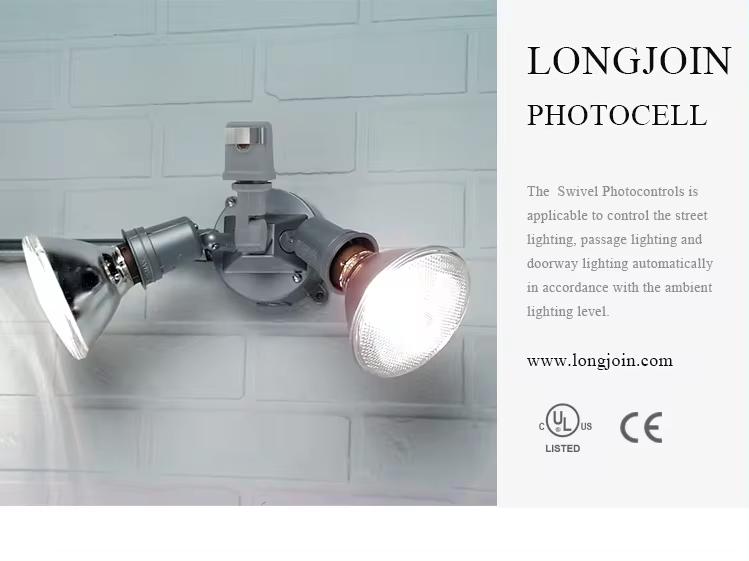
In mature markets like Europe and North America, the readiness and understanding of smart control systems are notably advanced. This sophistication stems from well-established ecosystems that integrate IoT, big data, and cloud management into urban infrastructure.
Cities are increasingly adopting smart city frameworks where light controllers are a core component, facilitating precise energy management and predictive maintenance.
Additionally, these regions have an informed customer base and a robust supply chain, allowing for seamless implementation of advanced technologies. High market awareness, coupled with a demand for cutting-edge solutions, drives rapid adoption. For instance, smart lighting systems now integrate with AI-driven platforms for real-time analytics, highlighting the technical readiness in regions that prioritize innovation and efficiency over traditional lighting systems.
Infrastructure Quality
The adoption of light controllers in is closely tied to any region’s robust infrastructure, which supports the seamless integration of advanced technologies. Developed nations such as Europe and North America benefit from well-maintained power grids, consistent energy supply, and widespread access to high-speed internet—all crucial for the efficient operation of smart lighting systems.
These factors enable cities to deploy street light sensors with minimal technical barriers, ensuring stable performance.
In contrast, developing regions often face challenges like outdated power infrastructure, inconsistent electricity, and limited connectivity, which hinder the effective implementation of smart control systems. The disparity in infrastructure quality not only impacts initial deployment but also affects long-term maintenance and scalability, making it difficult for emerging markets to match the efficiency levels seen in Europe and North America.
Cultural & Educational Influences
Cultural values and education play significant roles in technology acceptance. Europe and North America’s higher levels of education and awareness about climate change have fostered a culture that readily embraces innovations aimed at reducing carbon footprints. This helps drive public support for energy-efficient solutions like light controllers.
In contrast, developing regions often prioritize immediate economic needs over long-term sustainability goals, affecting the pace of smart technology adoption. Moreover, limited technical education and awareness create barriers to understanding the benefits of these systems. The convergence of cultural priorities and education levels, therefore, heavily influences the widespread acceptance of smart outdoor lighting in developed markets.
Supply Chain Advantages
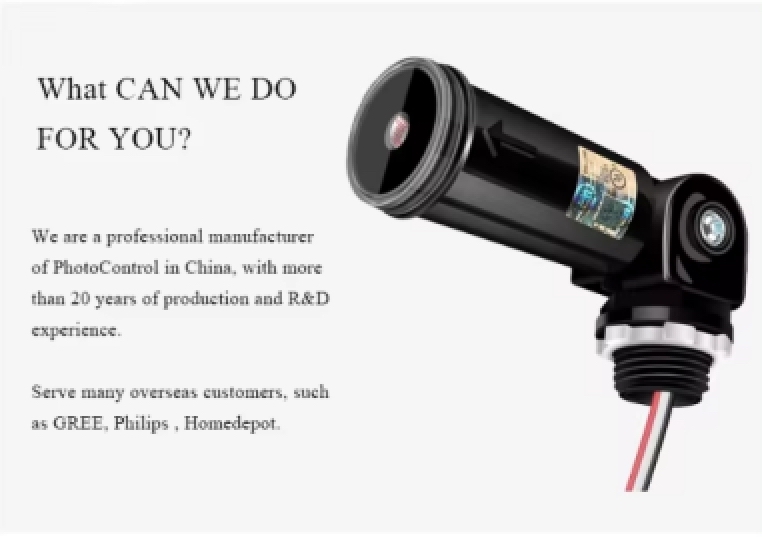
The established supply chains in Europe and North America provide a competitive edge in light controller adoption. These regions benefit from well-developed networks of manufacturers, distributors, and service providers, enabling quick and cost-effective deployment of advanced lighting solutions.
For instance, Europe’s smart lighting market was at $16.06 billion in 2022, driven by streamlined logistics and regional manufacturing hubs. This mature supply chain not only ensures lower production costs but also enables better pricing, making smart controllers more accessible to municipalities and businesses.
In the U.S., global companies like Signify and GE have optimized production and distribution channels, allowing for rapid scaling and lower per-unit costs. These supply chain efficiencies significantly enhance market readiness, giving Europe and North America a clear advantage over less-developed regions.
Historical Development
Europe and North America have played pioneering roles in the evolution of smart lighting and energy management. Early initiatives in these regions laid the foundation for today’s advanced systems.
The evolution started back in the 1990s when Europe took initiatives like the European Energy Performance of Buildings Directive (EPBD), which promoted efficient lighting technologies. Simultaneously, North America began exploring automated lighting controls, with cities like New York piloting early smart streetlight projects in the 2000s.
Over time, these regions continuously refined their systems by integrating IoT, sensors, and AI into lighting infrastructure. Landmark projects such as Copenhagen’s smart streetlight network and Chicago’s citywide smart lighting program set global benchmarks. This history of early adoption and technological advancement positioned Europe and North America as trendsetters in the global shift toward intelligent outdoor lighting systems.
Global Trends & Future Outlook
As sustainability awareness and technological accessibility increase, the adoption of light controllers is set to expand rapidly in emerging economies. In countries such as India and Brazil, governments are implementing schemes for the improvement of infrastructure and stronger energy efficiency that create demand for light controllers.
Additionally, with the falling costs of IoT devices and cloud-based management systems, these technologies are becoming accessible to developing regions, too.
According to market projections, the global smart lighting market is expected to grow at a CAGR of 22.1% by 2030, with much of this growth driven by emerging economies.
Final Words
The prevalence of light controllers in Europe and North America is driven by economic incentives, stringent regulations, and advanced market conditions. As global awareness of sustainability grows, these regions’ leadership in smart lighting technologies sets a precedent. For those seeking reliable smart lighting solutions, Chi-Swear offers top-notch products like photocells that meet these evolving demands effectively.
External Links
- https://www.greenmatch.co.uk/blog/energy-prices-europe
- https://www.energybot.com/electricity-rates
- https://www.en-standard.eu/csn-en-13201-1-4-road-lighting
- https://betterbuildingssolutioncenter.energy.gov/challenge
- https://www.grandviewresearch.com/industry-analysis/europe-led-lighting-market
- https://energy.ec.europa.eu/topics/energy-efficiency/energy-efficient-buildings/energy-performance-buildings-directive_en
- https://www.grandviewresearch.com/industry-analysis/global-smart-lighting-market

